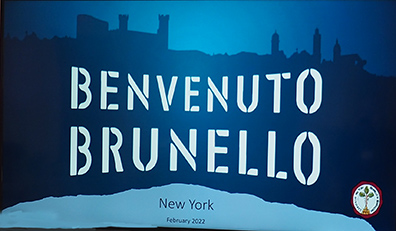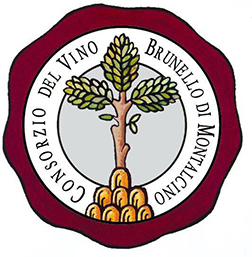On Thursday, February 24, 2022, we attended the afternoon session of Benvenuto Brunello 2022 – New York, which was part of a 2-day, 4-session event of the 2022 Release of New Vintages. Held at the Midtown Loft & Terrace in Manhattan, fifty-three wineries presented 156 wines available for tasting during the 3-hour presentation. The new releases consisted of the Brunello di Montalcino 2017, Brunello di Montalcino Riserva 2016, and Rosso di Montalcino 2020. What we learned over the course of the three-hour session was both informative and interesting, and provided us with an increased knowledge of the famed Montalcino wines.
The Four Types of Montalcino Wines
In 1967, The Consortium of the Brunello di Montalcino received its prestigious D.O.C. designation. Interesting to note is that only four wines have the right to be produced in Montalcino with the “Protected Designation of Origin” (DOCG and DOC); Brunello di Montalcino DOCG, Moscadello Di Montalcino DOC, Rosso Di Montalcino DOC, and Sant’Antimo DOC.
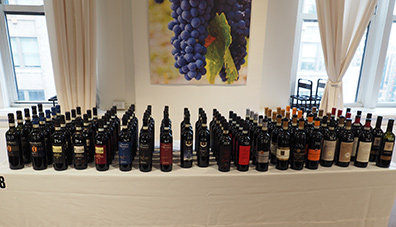
To further distinguish the characteristics of each, for Brunello di Montalcino DOCG the grape variety is 100% Sangiovese, with a maximum yield of 8 tons of grapes per hectare, must spend a minimum of 2 years in oak casks, followed by 4 months in a bottle, must be bottled in the production area, have a minimum alcohol content of 12.5%, and are released January 1 of the 5th year following harvest. Riserva requires 2 years of aging in oak cask followed by six months in a bottle and are released the 1st of January of the 6th year following the harvest. Brunello di Montalcino wines can only be sold in Bordeaux type bottles.
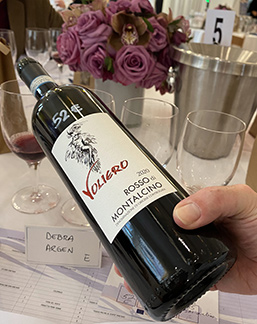
Rosso di Montalcino is made from 100% Sangiovese however the maximum yield is 9 tons of grapes per hectare vs 8 tons for Brunello di Montalcino. While it does not have the same aging requirements as the Brunello di Montalcino, it must remain in the winery for 1 year before it is released on the 1st of September of the year following the vintage. Bottling must take place in the production area, and the wine can only be sold in Bordeaux type bottles.
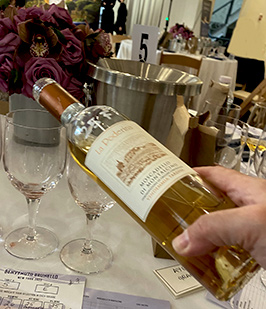
Moscadello Di Montalcino DOC Is made from Moscato Bianco, with maximum yield of 10 tons per hectare for Natural and Bubbly types of wine; 5 tons per hectare for Late Harvest. Bottling must take place in the production area and are released on the 1st of January of the second year after the harvest (for the Late Harvest type.)
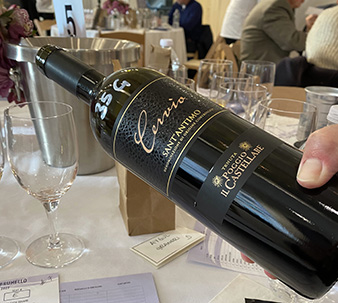
Sant’Antimo DOC uses a variety of grapes recommended and authorized in the province of Siena, with specific limitations for types with a variety name and for the Vin Santo. Maximum yield of grapes is 9 tons per hectare for the white and the Sant’Antimo Rosso, and 8 tons per hectare for other reds. Bottling must take place in the province of Siena.
The Terroir
Besides the grapes, it is the terroir that distinguishes the wines of Montalcino and gives them such diverse characteristics, as well as the style of the vineyard. Sangiovese grapes do not thrive in Montalcino, they survive, which while eliciting less fruit, the flavor is more intense.
Important to note is that there are four “facings” of Montalcino with varying elevations. The North has elevations from 300-400 meters, differentiated by cool nightly breezes, generally cooler temperatures, and later harvests. It is predominantly calcareous clay and limestone mix with rock fragments, generally steep, and leveling out to the east. Southern elevations range from 400-500 meters, has great diurnal shifts, galestro soils with clay, salt and limestone, with some areas having more clay and calcareous. Southeast elevations range from 200 – 450 meters, is closest to Mount Amiata (a lava dome) and is moderated by the Orcia River. The Southwest has elevations that range from 100-150 meters, has a warmer and drier microclimate, more undulating hills and greater percentages of clay and silt. Due to the diverse microclimates and soils, each of the four facings produce slightly different flavor profiles for their wines.
“Star Vintages”
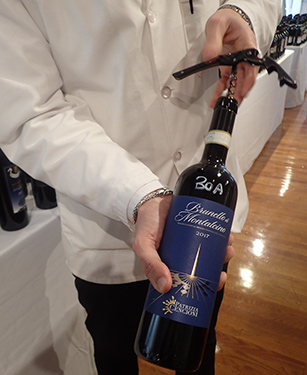
2017 is considered a Four-Star Vintage; what that means is that 2017 had a mild, rainy winter, followed by a warm, dry March which brought early flowering. A cold April brought some frost damage, followed by a drought from May through August. There were also extreme high temperatures in July and August which caused hydric stress, followed by cooling temperatures and mild rains in September. Warm and sunny weather extended the growing season through late October. Reduced quantities but good quality, pronounced aromatics and tannins.
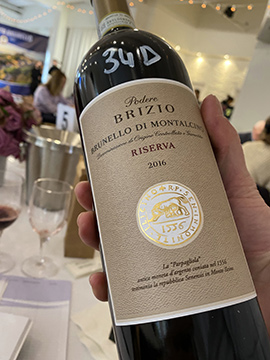
2016 is considered a Five-Star Vintage as there was a mild, dry winter, followed by a warm, dry March which produced early flowering. There was a rainy Spring during flowering and fruit set followed by a consistently warm summer with optimal diurnal shift, and light rain in September and October allowed for a calm and relaxed harvest. The result is that the wines show ripe fruit and smooth tannins. 2020 Is also a Five-Star Vintage as it had a cool, dry winter, followed by a snowy, rainy Spring, flowering in late May, early June without anomalies, fruit set in June under rainy, warm conditions. A hot, dry July required canopy management against sun damage, followed by a hot, stormy August with ideal diurnal shift in September and October with significant rainfall, which required patience to reach phenolic ripeness.
The Wineries for Benevento Brunello 2022
The Wineries
Let the Tasting Begin
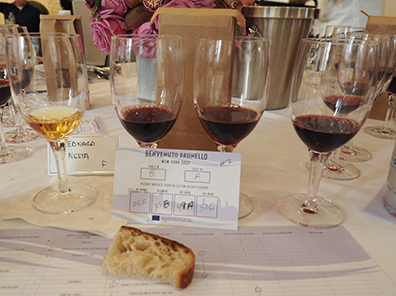
When you have the possibility of tasting 156 wines from 53 wineries and only have 2.5 hours of tasting time how do you select which wines you would like to taste? Each participant received 7 tasting cards where you could select up to 4 wines per card, for a total of 28 tastings. Comfortably seated at a large round table, we handed one of our cards at a time to a sommelier who would bring the wines to the table for tasting. Self-paced tasting, and individual selection of which wines we would like to taste, helped to distinguish the high-quality of the event, and make it a memorable experience.
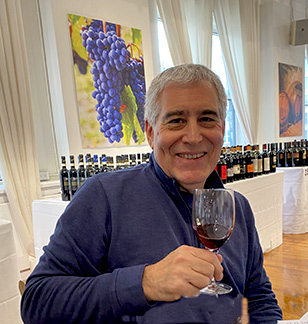
We decided to divide and conquer the list by each making one selection from each of the wineries, followed by a few crossover wines that we both wanted to try. Even with the “swirl, sniff, sip, and spit” method of wine tasting, experiencing 28 wines in 2.5 hours required dedication, as well as taking short breaks to go outside and breathe fresh air so that we could come back in and properly nose and appreciate the heady aromatics of the wines presented, and sip water between wines to appreciate their full characteristics on the palate.
Over the course of our allotted tasting time, we tasted the Brunello di Montalcino DOCG 2017, Brunello di Montalcino DOCG Riserva 2016, Rosso di Montalcino DOC 2019, Rosso Di Montalcino DOC 2020, Moscadello Di Montalcino DOCG 2016, and a Sant’Antimo Vin Santo DOC Riserva 2015. Doing side by side vintage tastings, we were able to compare and better appreciate the nuances of the various years of the wines, as well as the individual styles of the vineyards. It was a perfect afternoon of learning by tasting in a beautiful venue in New York City. Saluti!
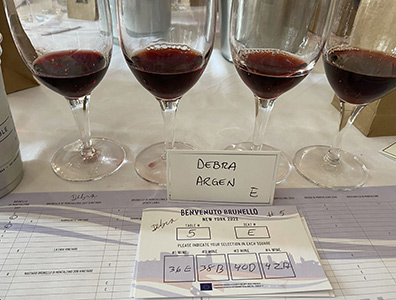
To learn more about Brunello Di Montalcino wines, please visit the Consorzio Del Vino Brunello Di Montalcino website: https://www.consorziobrunellodimontalcino.it/en/home/home
Consorzio Del Vino Brunello Di Montalcino
Via Boldrini n. 1053024 Montalcino (SI)
P.IVA 00696630524
Infoline: +39-057-784-8246
Fax: +39-057-784-9425
Email: info@consorziobrunellodimontalcino.it
Website: https://www.consorziobrunellodimontalcino.it/en/home/home
Facebook: https://www.facebook.com/brunellodimontalcino
Instagram: https://www.instagram.com/brunellodimontalcino/
Follow Luxury Experience on Facebook at www.Facebook.com/LuxuryExperience to see photos and videos.
Follow Luxury Experience on Twitter at https://www.twitter.com/LuxuryPair @luxurypair
Follow Luxury Experience on Instagram: www.Instagram.com/luxurypair @luxurypair
© March 2022. Luxury Experience. www.LuxuryExperience.com. All rights reserved.

